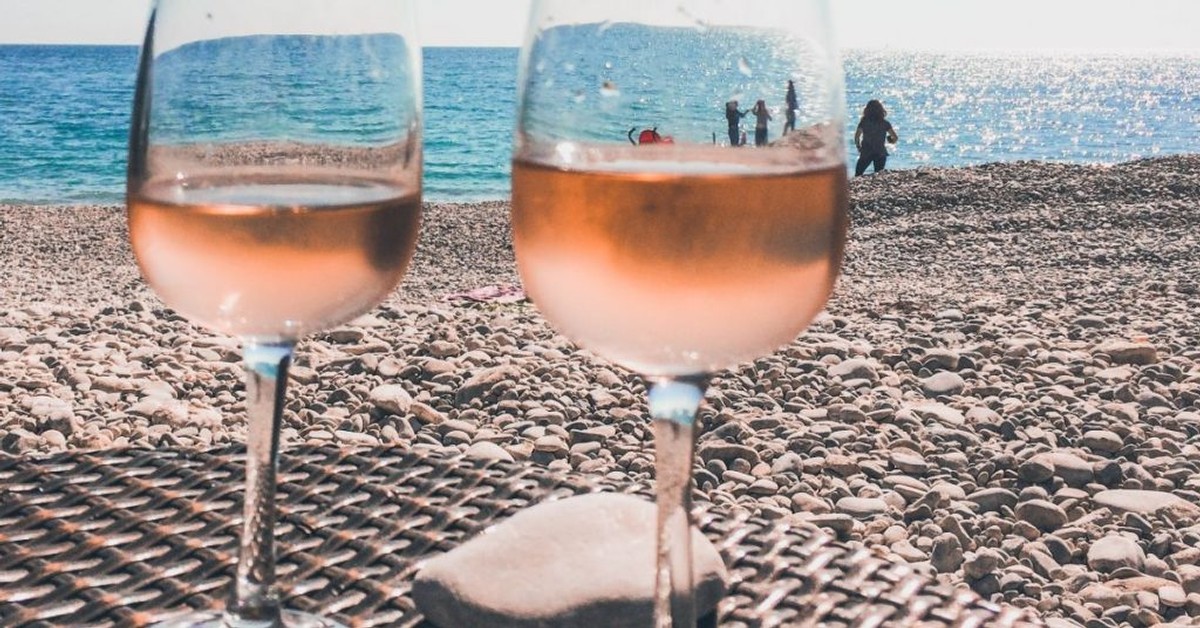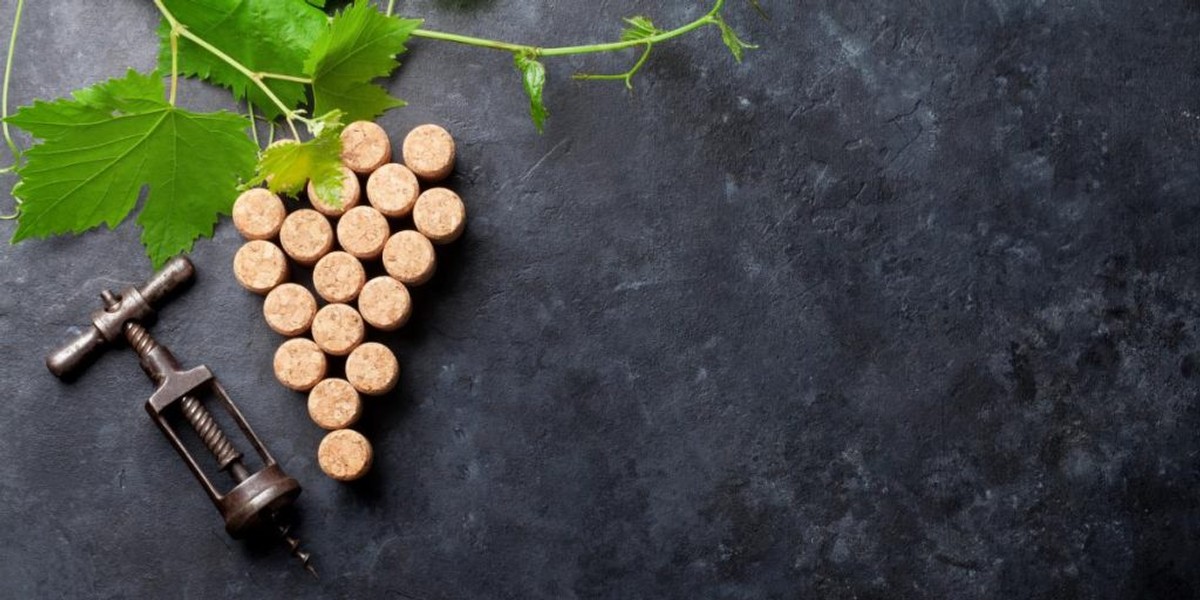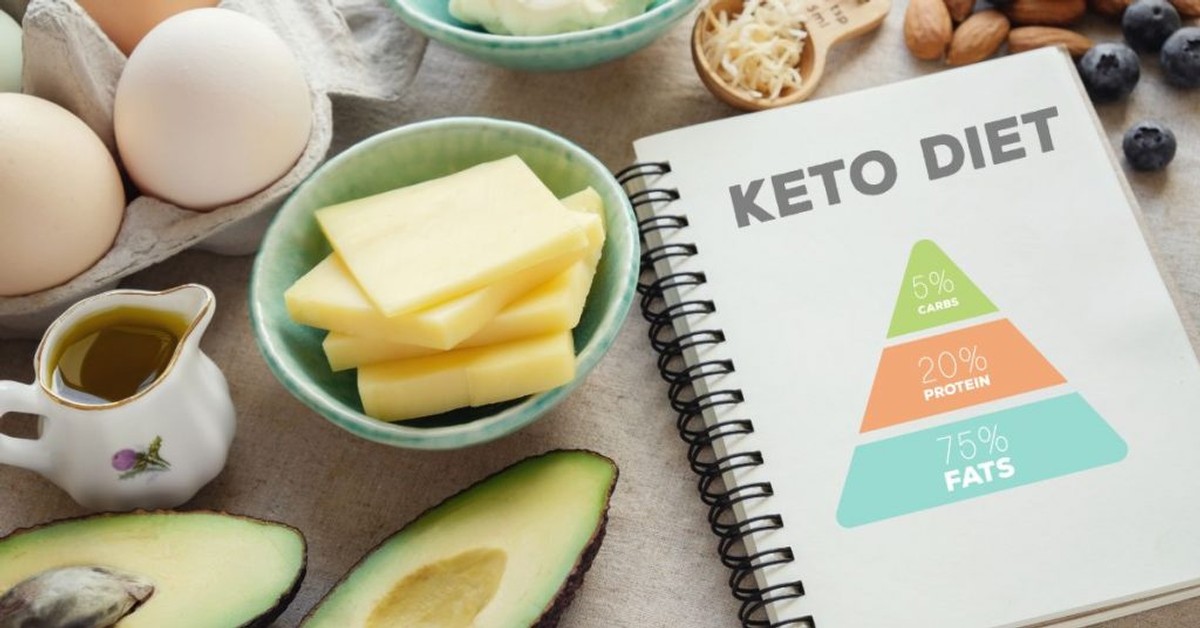Is Pinot Noir Rosé Sweet or Dry?
Pinot noir rosé uses a very temperamental grape. It only grows well in cool climates that see a lot of rain. Needless to say, this makes the Willamette Valley an ideal location to grow it. It's a dry rosé wine that nonetheless has many sweet characteristics. This confuses many as to whether it's a dry or sweet wine. Once you understand it, you begin to see the possibilities in the best pinot noir rosé pairings.

Pinot Noir Rosé Has Exceptional Dryness
Dry wines typically ferment longer, allowing more of the sugar to be consumed. This can take away some of their sweetness, but the unique quality of pinot noir rosé is that it's a dry rosé wine that still brings a lot of sweet and floral flavors. It can feel more delicate because of that dryness. Pinot noir rosé can have as little as 3 grams of sugar per serving. That's among the lowest measurements of any wine.
The primary flavor you'll taste in a good pinot noir rosé is strawberries. This is joined by rose and pomegranate flavors. You may also taste a bit of orange zest, lemon, or white cherry, depending on the particular maker.
The Best Pinot Noir Rosé Pairings
These flavors bring out the most in spices like thyme. Greener spices will help pronounce the sweet flavors in the wine. This makes thyme-roasted chicken an ideal pairing.
A number of corn dishes also work well. That sweet flavor of corn that hits the back and sides of the mouth help highlight the fruit flavor along the center of your tongue. The bit of butter you might put on corn on the cob or that hint of cream in a dish like corn chowder is just enough to highlight pinot noir rosé's acidic qualities. That creates a superb mouthfeel.
A goat cheese salad or goat cheese with herb crackers can combine those green spice flavors with something creamy for a highly floral taste with a dry delivery. Each bite and sip you alternate will accentuate the creaminess and herb-flavor of the goat cheese with that bright acidity of the dry rosé wine.
Other good recommendations to consider are trout, salmon burgers, crab, or edamame.
Good and Guilt-Free
The great part of this all is that pinot noir rosé is a pretty healthy wine with a low sugar content that pairs deliciously with other healthy and incredibly tasty meals. Of course, you can also enjoy pinot noir rosé on its own without feeling guilty. That low sugar content makes it a perfect wine to drink whenever you like. Those fruit and floral flavors make it perfect for sitting on the patio and listening to the wind through the trees.
What Is Pinot Noir Rosé?
The best Oregon Rosé wine will take you by surprise. Pinot Noir Rosé in Oregon is an incredibly bright and crisp wine that's perfect for all seasons. How is it made and what will it go with? That's easy to learn:

How Pinot Noir Rosé is Made
Pinot Noir Rosés use the same Pinot Noir grapes that the famous red wine from the Willamette and Umpqua valleys use. The juice is strained from its skins and pulp earlier to keep a lighter and more delicate flavor. It requires a delicate balance between the qualities of Rosé and Pinot Noir.
Pinot Noir Rosé in Oregon uses grapes that are direct pressed for the Rosé. This accounts for two thirds of the grapes. The other third comes from a Pinot Noir tank. This emboldens the fruit flavors and provides a more decided structure.
The Flavor and Finish
The result is the best Oregon Rosé wine. Its beautiful rose-pink color glitters in the light, evoking dappled light on a river at sunset. It's reassuring in both summer and winter. The flavor is that of strawberries, with an acidity that cuts through thicker flavors. This is a big advantage of Pinot Noir Rosé over Rosés that have a less complex delivery and less crispness. The finish is both delicate and succulently dry, enhancing the fruit flavors and floral bouquet.
A Pinot Noir Rosé demands more attention than your average Rosé. Too many Rosés are sweet but flat in their flavors and don't fully stand alongside and complement the snacks and meals you pair with them.
Good for Diets, Brilliant for Pairing
Best of all, the dryness of Pinot Noir Rosé wines means they're much more appropriate for diets like keto than other roses would be. Ordinary Rosés are often far too sweet. Pinot Noir Rosés are dryer and allow you to enjoy fuller, more flavorful Rosés with a fraction of the sugar content.
Pinot Noir Rosé in Oregon is ideal with seafood, raw vegetables and strong tastes. Seared scallops are a perfect pairing. Salads with strong tastes like red onion and feta are delicious. Of course, this means the robust taste of bruschetta goes wonderfully with it. For fuller meals, try it with pork loin in a cherry sauce.
Oregon vs. Burgundy Pinot Noir: A Comparison
Why is Oregon Pinot Noir compared so often to Burgundy Pinot Noir? The wine achieved its greatest fame growing in the vineyards of Burgundy, France, so it's a compliment when Willamette Valley wines are called Burgundian. How is it that Oregon wines recall their French cousins so vividly?

In a Class of Their Own
“New World” Pinot Noirs don't just refer to those grown in the United States. They can also refer to wines grown in New Zealand. Now, many places take an approach to Pinot Noir that pronounces its fruit flavors and lose some of the wine's inherent, patient balance. It's simply a matter of taste, but this can be one way California and New Zealand Pinot Noirs differ.
Climate Cousins
It's not always intentional, either – at least not at first. Pinot Noir grapes are affected by weather, region, light and cloud cover, soil composition – an incredible range of factors that start before the more specific ones that winemakers control.
Like Oregon, Burgundy sees cool conditions with a good deal of cloud cover. The soil composition in both areas is very unique and uncommon. Both Oregon and Burgundy use some of the same “vine clones” - vines that are propagated from a particular plant. Some producers even produce Pinot Noir in both areas – Oregon and Burgundy.
More Similarities Than Differences
There's something about Oregon Pinot Noir that maintains the greater complexity and silken texture of those Burgundy wines. It's more elegant, with a taste of fruit that's deep and lingering instead of immediate. For many, that's how you recognize both an Oregon Pinot Noir and a Burgundian one. They're both more subtle. There's a touch more acidity, which develops a better balance. That can pronounce their mouthfeel that much more with ideal pairings.
A comparison comes away showing that Oregon and Burgundy Pinot Noir are remarkably similar and satisfying for many of the same reasons. If anything, the Oregon wines are just a touch earthier, a delicious quality in a Pinot Noir and a very Oregon-centric feature. They mix elegance with minerality that evokes its fruit flavors in incredible ways. You're also more likely to find Oregon Pinot Noir with a bit more range, such as variants with lower alcohol content (better for dieting!) The Burgundy wines are masters of oakiness, and delivering their fruit components in waves.
More Complex, More Elegant
The main takeaway here is that both Oregon and Burgundy wines leave Californian and New Zealand versions in the dust when it comes to more complex wines. They have deeper, more layered taste, and their better acidity levels make Oregon and Burgundy Pinots more fulfilling when pairing them with snacks or meals.
Are Wine Corks Compostable?
Can you compost wine corks? Or do you recycle wine corks? Both are possible. Cork itself is an incredibly unique wood that can be harvested in a sustainable manner. It doesn't even harm the tree. If you understand what makes cork so special, you'll also understand the proper ways to compost or recycle it.

Why Cork is Special
Cork is made from cork oak, a tree that grows up to 65 feet tall. Yet the tree doesn't need to be cut down in order to harvest it. It can keep on standing and growing. Cork oak regrows its outer bark. About once a decade, the bark can be stripped off an adult tree without causing any harm. On average, a single cork tree can see its bark safely harvested 16 times in its lifetime.
Cork Oak Stewardship
Many cork producers are also working with the Rainforest Alliance. While these trees grow in Southwest Europe and Northwest Africa, the Rainforest Alliance itself is helping cork producers to earn Forest Stewardship Council certifications. These educate producers and place requirements on them to meet both social and environmental standards. This will help conserve cork oak safely into the future.
What makes cork so special? Why can't you use any old product to seal wine? Cork is light and possesses elastic qualities. This allows it to serve as a stopper in many bottled products. It's also impermeable so gases and liquids can't pass through it. This keeps whatever is sealed in a corked bottle fresh and unspoiled.
How to Compost Wine Corks
Make sure that the cork isn't actually a synthetic material made to look like cork wood. You can cut the cork open to check. Synthetic corks are foamy and look very uniform inside. Do not compost a synthetic cork.
If it's a real cork, remove anything artificial attached to it. This can include foil covers, plastic, or screw lid material. Anything plastic, from a synthetic cork to a plastic screw cap, can go in the recycling bin.
To compost wine corks much more quickly, chop the cork up to help it break down. As in any compost material, the more green elements (like grass, plant clippings, or leftover vegetable scrap) added into the compost, the quicker non-green materials will break down.
You can even do this with other cork materials, such as a notice board. Just make sure that they don't have glue or paint on them. You can cut these parts out and still recycle the parts without paint or glue.
How to Recycle Wine Corks
Real cork can be recycled, but don't throw it in the recycling bin. Many stores have programs to recycle wine corks – you can take your corks into Whole Foods, for instance. Look for a store with Cork Reharvest Boxes.
There are also companies that have drop-offs at other businesses, such as ReCork and Cork Forest Conservation Alliance. You can search online for the nearest drop-off locations. If these locations are too distant, you can mail your corks in at no cost to CorkClub. There are other businesses that may offer these services, so don't be afraid to check. These are simply the ones that are accessible to the most people.
Of course, you can also reuse corks in home art projects. If you're recycling corks that were used in these projects, cut any parts with paint or glue off them before bringing them in for recycling.
So uncork a bottle of your favorite wine and explore your possibilities!
Is Pinot Gris Keto Wine Friendly?
Many people think a keto diet means they can't enjoy a drink any more. You still have a pretty wide range of drinks in which to indulge. This starts with pinot gris white wine on keto. You can move from there using a low carb wine chart you'll find below – one for white and one for red wine.

What Makes a Low Carb Wine?
Not all wines are keto-friendly, as many have a high residual sugar content. Some you can enjoy with limitation, some are just no-gos when on a keto diet.
What you're looking for are dry wines. A dry wine has less than 10 grams of sugar in every bottle. Sweeter wines have a shorter fermentation period. Since yeast consumes sugar in alcohol, this shorter fermentation period means not as much of the sugar has been consumed.
Seems easy, right? Wines usually don't have nutrition facts printed on them. That means keeping a handy low carb wine chart around. Here's one for red wine:
Red Wine Carb Chart
| Pinot noir | 3.4g per 5 oz. |
| Merlot | 3.7g |
| Cabernet Sauvignon | 3.8g |
| Syrah | 4g |
| Red Zinfandel | 4.2g |
| Port | 9g |
| Sherry | 9g |
If you're allowed 20 grams of sugar per day, a 5 oz. glass of pinot noir or merlot should be easy to factor in. Yet port and sherry will take up nearly half your daily allowance of sugar.
White wines can be a little better, but not by much:
White Wine Carb Chart
| Sauvignon Blanc | 3g per 5 oz. |
| Chardonnay | 3.2g |
| Prosecco | 3.8g |
| Pinot grigio | 3.8g |
| Pinot gris | 3.8g |
| Pinot blanc | 3.8g |
| Riesling | 5.5g |
| Rose | 5.8g |
| White Zinfandel | 5.8g |
| Moscato | 7.8g |
Champagne can vary, but is typically in the 3.8 gram per glass range. You can enjoy 2 glasses of pinot gris and still be below the sugar content of a single glass of moscato.
Good Guidelines with Keto Wine
A good general rule to keep on the keto diet is to hold your wine choice to those below 5 grams of carbohydrates per glass.
Now one advantage of wine is that you typically have it later in the day. You already know how much sugar you've had throughout the rest of the day. If wine is one of the last things you'll have that day, it's easy to pull out your low carb wine chart and see what you can have.
Pinot gris white wine on keto is a great choice and goes with a lot of healthy meals.
You should know that products made from wine – such as alcohol pops or wine coolers – will have much more sugar. They'll come in at more than 30 grams of sugar apiece. Avoid these.
Wine, though, is one of the safer treats you can have in terms of sustaining your keto diet.